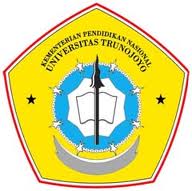Anda belum Log-in!
Silahkan Log in
Selamat Datang di Portal Digital Content Publisher
Minggu , 09 November 2025
Perpustakaan sebagai jantung pendidikan tinggi di Indonesia, harus mampu memberi kontribusi yang berarti bagi pelaksanaan proses belajar mengajar di perguruan tinggi.
di-posting oleh 090411100014 pada 2014-01-30 14:49:55 • 742 klik
“KLASIFIKASI PENDAPAT MASYARAKAT DUNIA MAYA TERHADAP PARTAI POLITIK DENGAN METODE EXPECTATION MAXIMIZATION” (Study Kasus : Jejaring Sosial Twitter)
"CYBERSPACE PUBLIC OPINION CLASSIFICATION OF POLITICAL PARTIES USING EXPECTATION MAXIMIZATION METHOD" (Case Study: Social Networking Twitter)
disusun oleh HABIBURRAHMAN
| Subyek: | sistem terdistribusi text mining klasifikasi pendapat |
| Kata Kunci: | Klasifikasi Expectation Maximization Peta Digital |
[ Anotasi Abstrak ]
Meningkatnya teknologi informasi semakin memudahkan masyarakat dalam berkomunikasi. Termasuk di antaranya melalui media jejaring sosial. Media jejaring sosial sekaligus menjadi tempat masyarakat dalam menyampaikan pendapatnya. Adanya fasilitas web service memungkinkan dilakukannya crawling untuk mengumpulkan pendapat masyarakat yang tersebar di dunia jejaring sosial Twitter. Sementara metode Expectation Maximization mengklasifikasikan sebuah pendapat berdasarkan kelas yang sudah ditentukan, yakni positif, negatif, dan netral. Selanjutnya pendapat yang telah dikumpulkan ditampilkan dalam bentuk persebaran dalam sebuah peta digital. Persebaran pendapat-pendapat tersebut didasarkan pada daerahnya. Maka dari itu dibutuhkan sebuah aplikasi yang dapat menghimpun pendapat masyarakat, mengklasifikasikannya, kemudian menampilkannya dalam bentuk persebaran dalam peta secara realtime. Diharapkan dengan adanya aplikasi ini menjadikannya salah satu referensi dalam mengetahui persebaran pendapat masyarakat. Hasil dari implementasi Expectation Maximization terhadap pendapat masyarakat masih memiliki nilai akurasi 64, 58 %. Hal ini karena twitter bertema partai bersifat sangat dinamis setiap waktunya.
Deskripsi Lain
The development of information technology increasingly allows people to communicate including through social media. Social media as well is a place for people to express their opinions . The web service facility allowed for crawling to gather public opinion spread across the social network, in this case Twitter. The method of Expectation Maximization classified an opinion based on pre-determined classes, namely positive, negative, and neutral . Furthermore, the opinion which had been collected in the form of the distribution was shown in a digital map. Distribution of those opinions was based on region. Therefore an application was needed to gather public opinion , classify them , and then display it in the form of distribution of the map in real time. It was expected that the application would be one of the references in knowing the distribution of public opinion . Experimental results showed that the training data in a much different time of the testing data gave out the results which were not maximum with precision value of 0 % while the maximum results which were achieved by using 40 training data still had accuracy value 64, 58 % for training and testing data at the same time or close together . This was because twitter themed party was very dynamic every time. Then for the visualization of the results on the map only got one tweet which could be displayed due to the lack of a user in providing access to the latitude and longitude.
| Kontributor | : Mula’ab, S.Si., M.Kom.;Fika Hastarita Rachman,S.T., M.Eng |
| Tanggal tercipta | : 2014-01-27 |
| Jenis(Tipe) | : Text |
| Bentuk(Format) | |
| Bahasa | : Indonesia |
| Pengenal(Identifier) | : TRUNOJOYO-Tugas Akhir-5141 |
| No Koleksi | : 090411100014 |
Sumber :
Universitas Trunojoyo Madura
Ketentuan (Rights) :
2014
 Download File Penyerta (khusus anggota terdaftar)
Download File Penyerta (khusus anggota terdaftar) 1. TRUNOJOYO-Tugas Akhir-5141-090411100014_Abctract_TOC.pdf - 145 KB
1. TRUNOJOYO-Tugas Akhir-5141-090411100014_Abctract_TOC.pdf - 145 KB 2. TRUNOJOYO-Tugas Akhir-5141-090411100014_Cover.pdf - 163 KB
2. TRUNOJOYO-Tugas Akhir-5141-090411100014_Cover.pdf - 163 KB 3. TRUNOJOYO-Tugas Akhir-5141-090411100014_Chapter1.pdf - 971 KB
3. TRUNOJOYO-Tugas Akhir-5141-090411100014_Chapter1.pdf - 971 KB 4. TRUNOJOYO-Tugas Akhir-5141-090411100014_Chapter2.pdf - 877 KB
4. TRUNOJOYO-Tugas Akhir-5141-090411100014_Chapter2.pdf - 877 KB 5. TRUNOJOYO-Tugas Akhir-5141-090411100014_Chapter3.pdf - 940 KB
5. TRUNOJOYO-Tugas Akhir-5141-090411100014_Chapter3.pdf - 940 KB 6. TRUNOJOYO-Tugas Akhir-5141-090411100014_Chapter4.pdf - 275 KB
6. TRUNOJOYO-Tugas Akhir-5141-090411100014_Chapter4.pdf - 275 KB 7. TRUNOJOYO-Tugas Akhir-5141-090411100014_Conclusion.pdf - 81 KB
7. TRUNOJOYO-Tugas Akhir-5141-090411100014_Conclusion.pdf - 81 KB 8. TRUNOJOYO-Tugas Akhir-5141-090411100014_References.pdf - 109 KB
8. TRUNOJOYO-Tugas Akhir-5141-090411100014_References.pdf - 109 KB 9. TRUNOJOYO-Tugas Akhir-5141-090411100014_Appendices.pdf - 725 KB
9. TRUNOJOYO-Tugas Akhir-5141-090411100014_Appendices.pdf - 725 KB Dokumen sejenis...
Dokumen sejenis...Tidak ada !
 Dokumen yang bertautan...
Dokumen yang bertautan...- Perancangan dan Implementasi Program Aplikasi Ujian Masuk Seleksi Program Minat & Prestasi Universitas Trunojoyo
- Analisis Penerapan Pertanyaan Standar Akuntansi Keuangan (PSAK) No. 59 Tentang Pengelolaan Zakat Pada Bank Syariah Mandiri (Studi Kasus pada Bank Syariah Mandiri Cabang Pamekasan)
- Deteksi Citra Berwarna Menggunakan Kombinasi Matrik Mask Delapan Arah dan Threshold
- Pengaruh faktor-faktor pelayanan terhadap tingkat kepuasan pelanggan pada PT. Perusahaan Daerah Air minum Cabang Bangkalan di Kabupaten Bangkalan
- ANALISIS TINGKAT RISIKO KREDIT PADA PD. BPR BANK DAERAH LAMONGAN
 Kembali ke Daftar
Kembali ke Daftar 